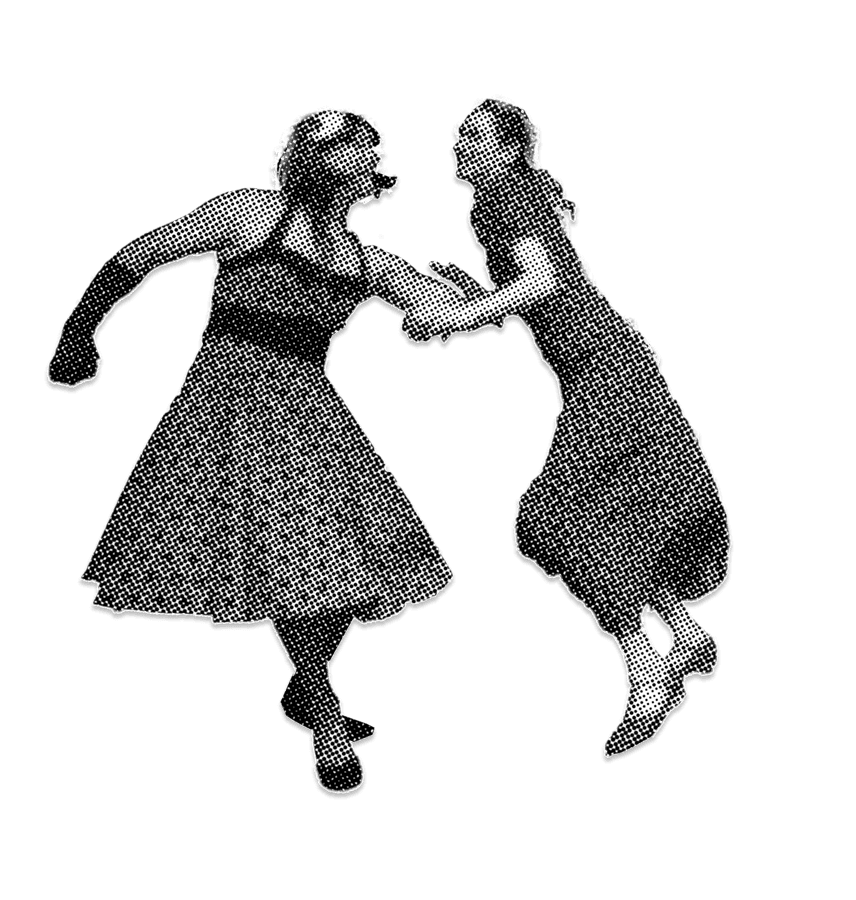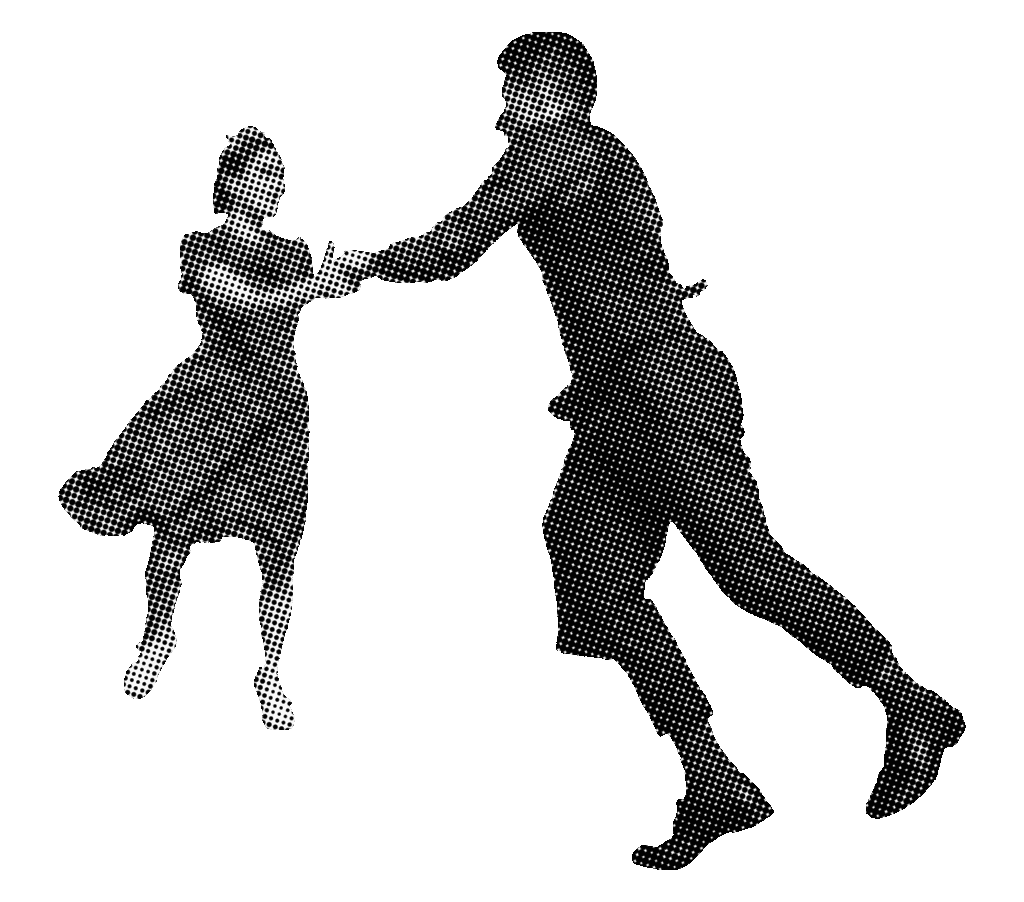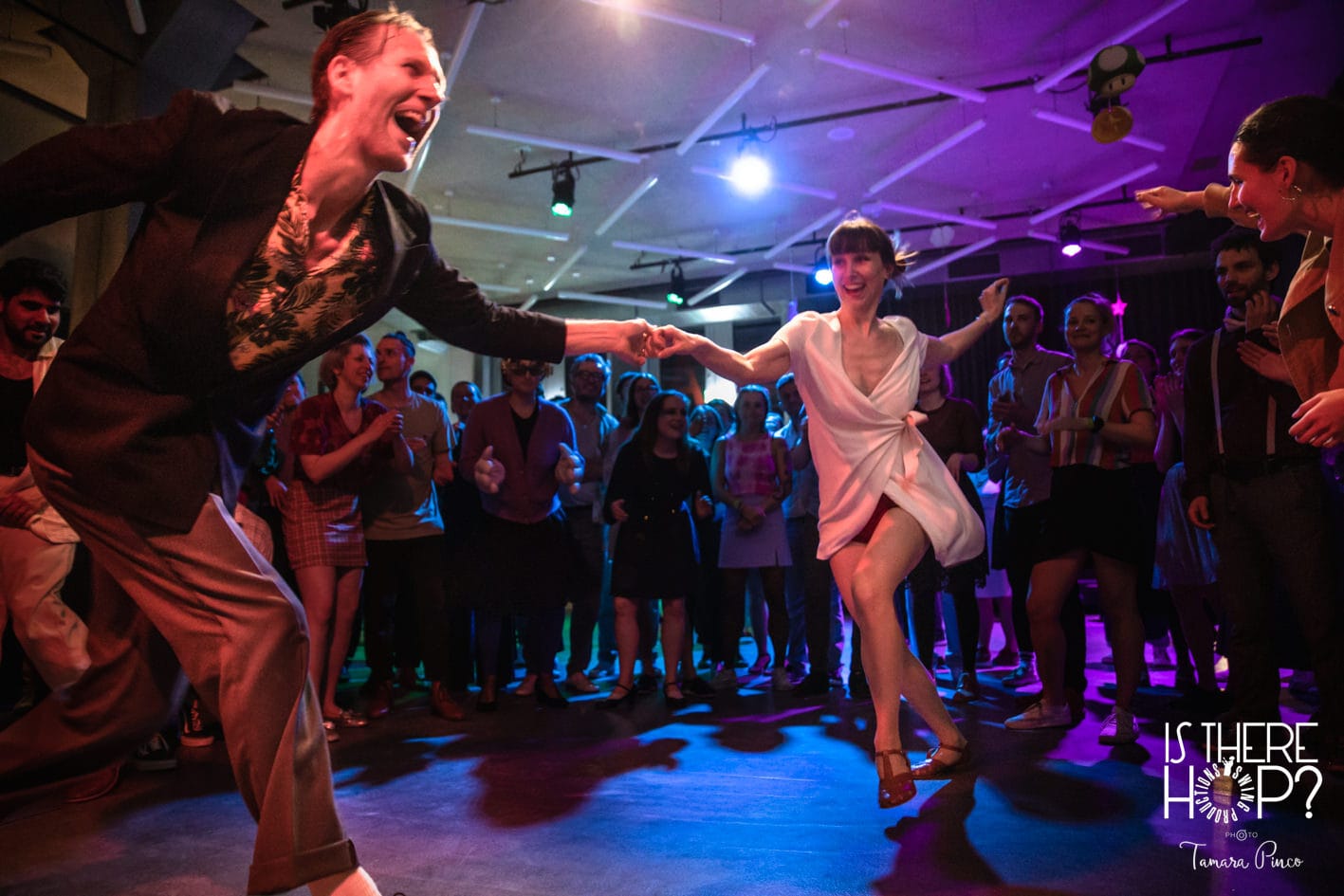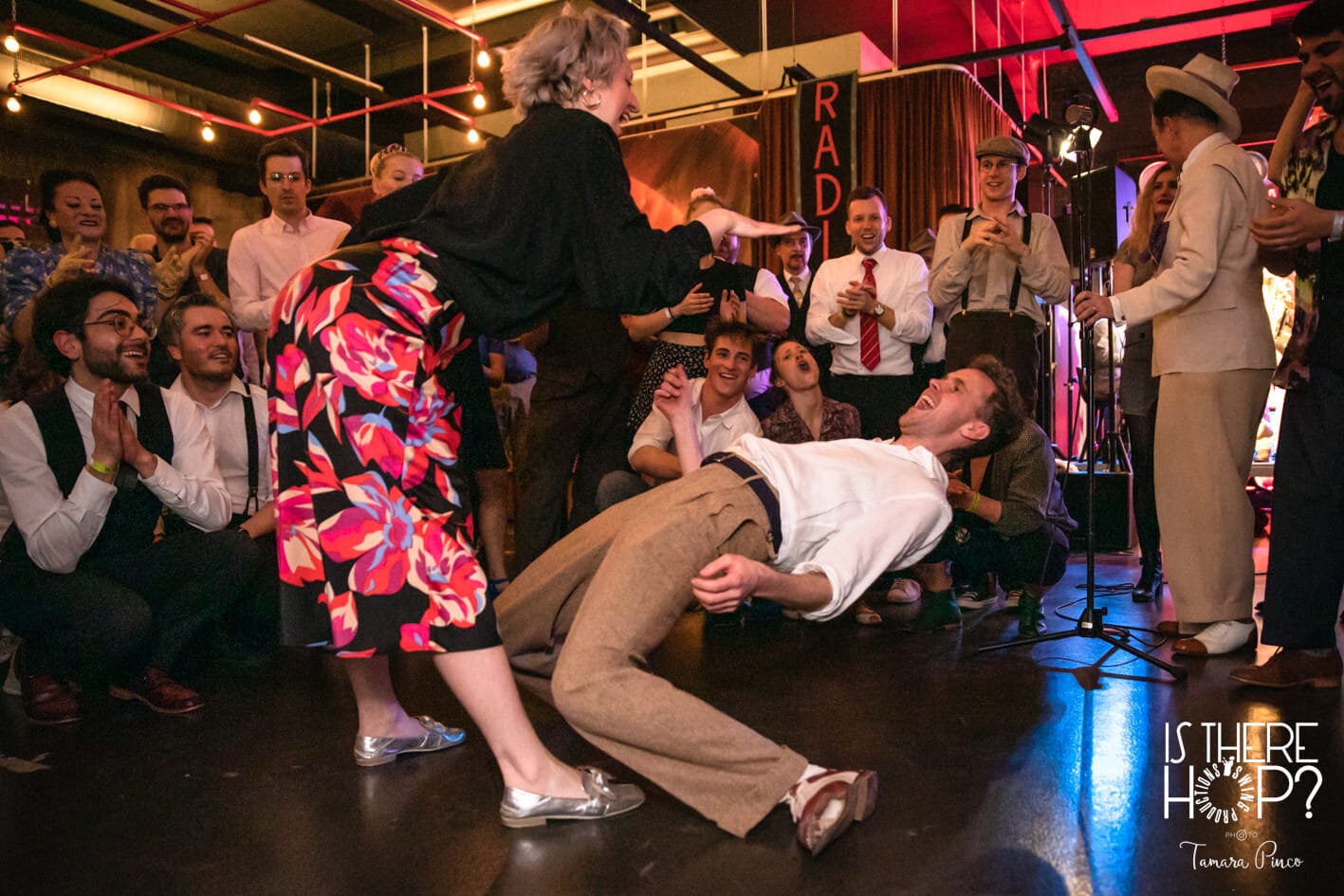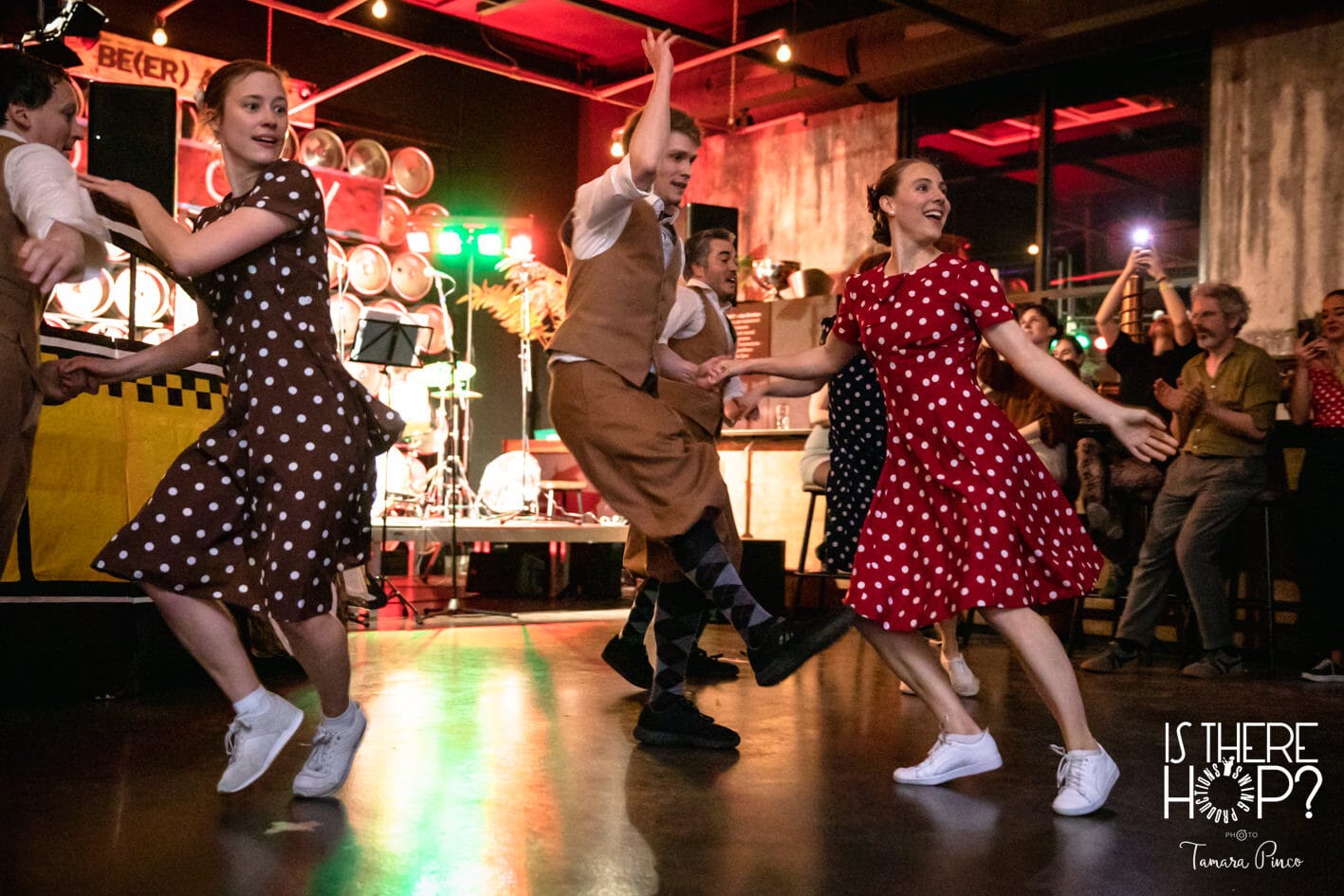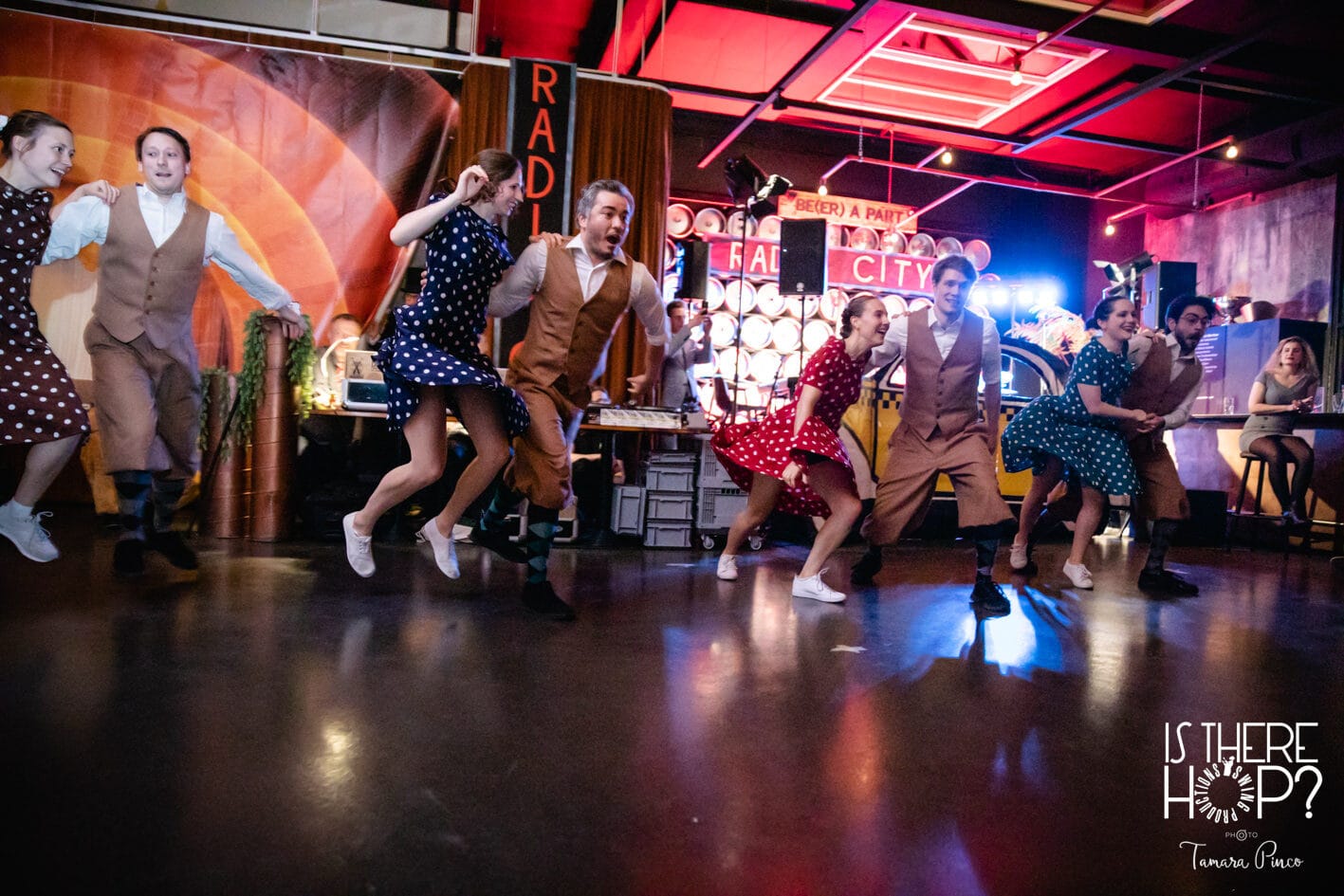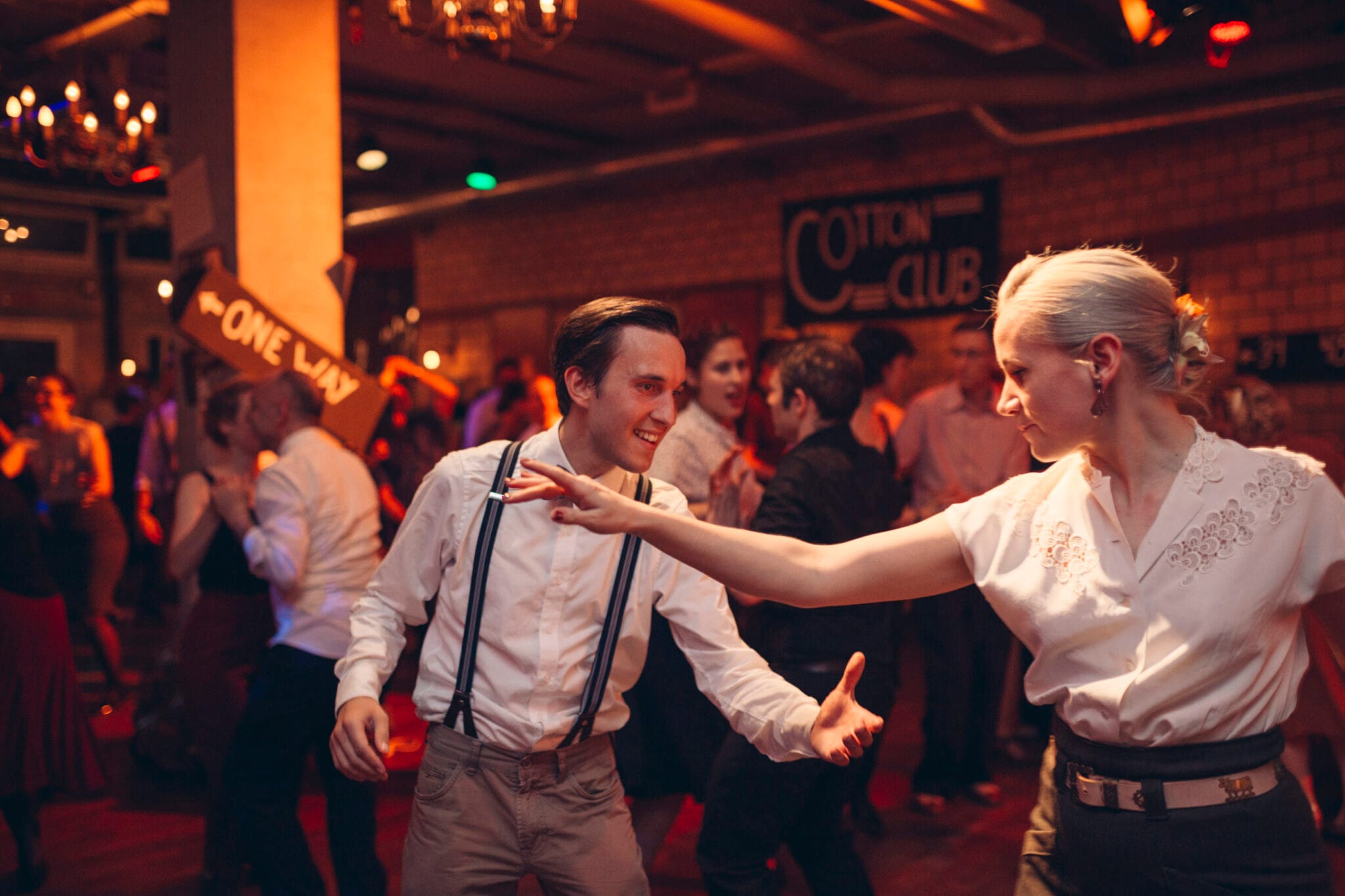Lindy Hop
Lindy Hop is often regarded as the basis of all swing dance styles. It originated in Harlem, New York, in the late 1920s and early 1930s and developed in parallel with big band jazz music.
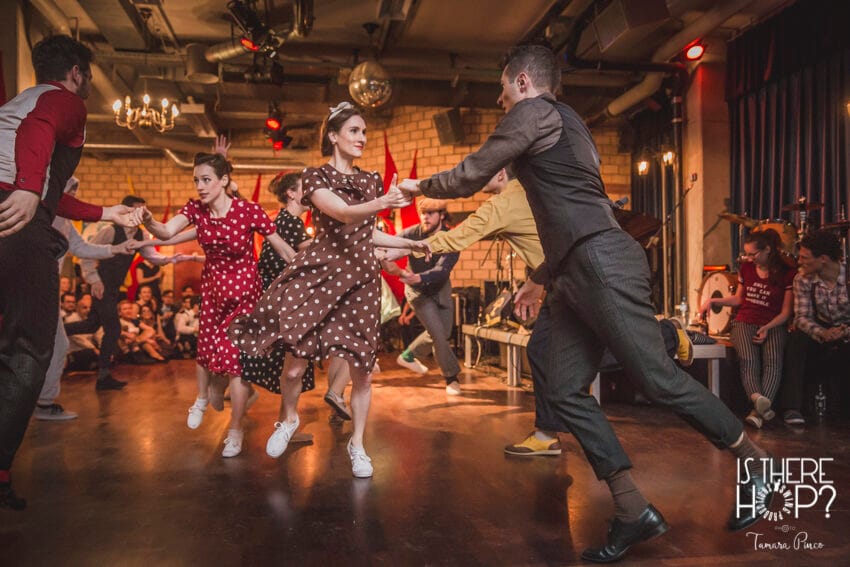
Lindy Hop developed in the Savoy Ballroom, a legendary dance hall in which various dance styles such as Charlestonbreakaway and other forms of jazz dance. Lindy Hop is considered to be one of the most famous and style-defining dances of the Swing-era.
The dance is characterised by a mixture of improvised and choreographed movements, with elements such as fast kicks, spins, rhythmic footwork and occasionally acrobatic figures - the so-called "aerials". The principle of lead and follow, i.e. non-verbal communication between the person leading and the person following, plays a central role. The basic structure is often based on eight counts, but Lindy Hop is very flexible and open to musical interpretation.
The name "Lindy Hop" is said to go back to the US aviator Charles Lindbergh, who was the first person to fly non-stop across the Atlantic in 1927 ("Lindy hops the Atlantic" was a newspaper headline at the time). The term was jokingly applied to dance, which was also seen as a "leap" across cultural and stylistic boundaries.
Musically, Lindy Hop is typically performed to Swing music jazz from the 1930s and 1940s, as played by Count Basie, Duke Ellington and Chick Webb, for example. The tempo can vary greatly, which gives the dance a wide range - from slow and soulful to fast and energetic.
Lindy Hop has been experiencing a worldwide renaissance since the 1980s. Today it is the centre of a lively Swing-dance scene with international festivals, local social dances, live concerts and dance classes. Lindy Hop is particularly appreciated for its freedom, creativity and the social interaction that arises when dancing together.
